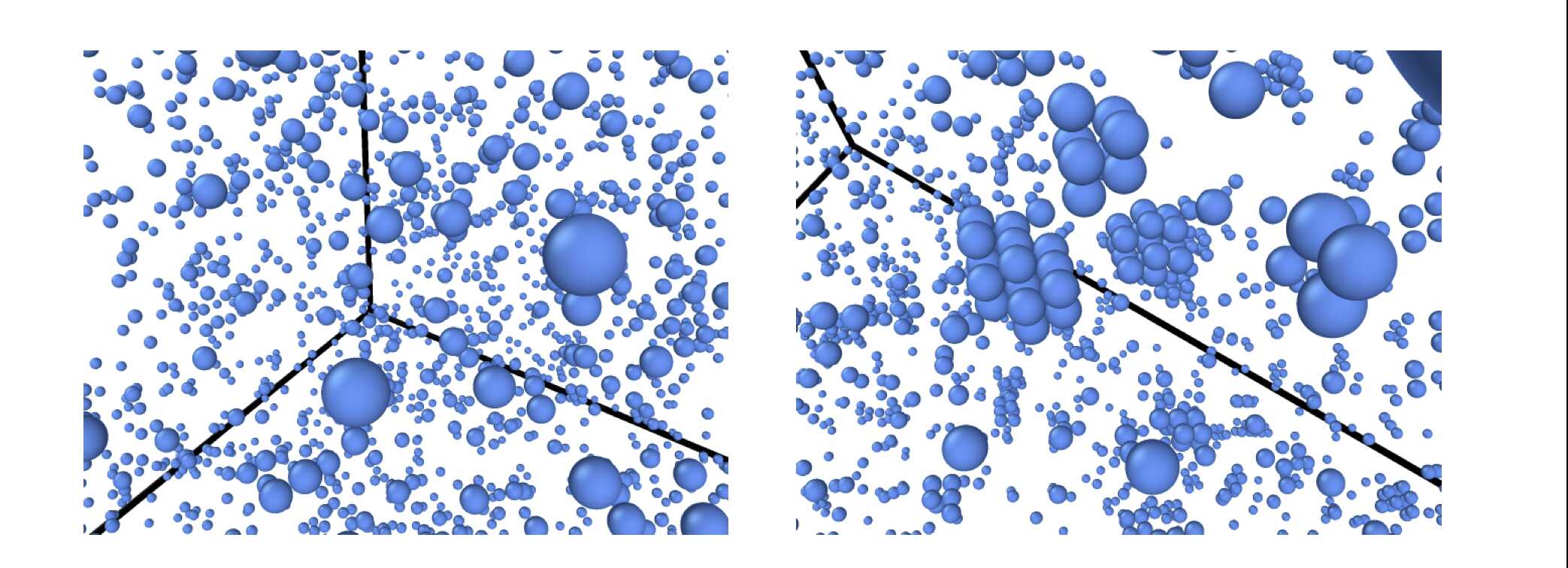CNIC made significant breakthrough in Numerical Simulation of Nuclear Material Irradiation Damage
The atomic kinetic Monte Carlo (AKMC) method, as a core tool for predicting nuclear material properties, has long faced bottlenecks such as high memory consumption, low communication efficiency, and lengthy computation times. To address these challenges, our center’s AI team independently developed a novel simulation software, MISA-AKMC (Figure 1), achieving for the first time a micron-scale AKMC simulation of 20 quadrillion atoms (2×10¹⁶), setting a new record in the field. Following previous achievements in numerical reactor structural mechanics, multiphysics coupling, and neutron physics published at PPoPP'23 and SC'23, this latest breakthrough has been accepted by SC'25 (CCF-A class), a top-tier international conference on high-performance computing.
This breakthrough was realized through three major technological innovations:
1. Memory efficiency: The Lattice Data Compression (LDC) and Vacancy Data Decompression (VDD) algorithms restructure data storage, reducing memory usage to a fraction of conventional methods.
2. Communication optimization: A novel multi-level pipeline architecture and on-demand communication forwarding-merge strategy significantly cut communication overhead.
3. Massive-scale parallelism: High parallel efficiency was achieved on an ultra-large-scale system with 16,000 GPUs, overcoming the long-standing bottleneck in atomic-level parallel simulations.
The software has been applied to study irradiation damage mechanisms in iron-copper alloys, successfully simulating the microscopic evolution of vacancy-induced solute precipitation (Figure 2). This provides an atomic-scale research tool for predicting the lifespan of nuclear reactor pressure vessel materials, advancing nuclear material safety assessment.
The first author of the paper is Li Shunde, a Ph.D. candidate from our center’s AI division, with visiting student Pan Zhijie and associate researcher Nie Ningming as co-first authors. The corresponding author is Senior Engineer Wang Jue.

Figure 1. Computational workflow of MISA-AKMC

(a) Initial state (b) Cluster formation
Figure 2. Microscopic evolution of vacancy-induced solute precipitation
Related Publication:
[1] Li Shunde, Pan Zhijie, Nie Ningming, Wang Jue*, Bai He, Chu Genshen, Zeng Yan, He Xinfu, Wang Yangang, Hu Changjun, Chi Xuebin. MISA-AKMC: Achieve Kinetic Monte Carlo Simulation of 20 Quadrillion Atoms on GPU Clusters. In Proceedings of the International Conference for High Performance Computing, Networking, Storage and Analysis (SC '25).
